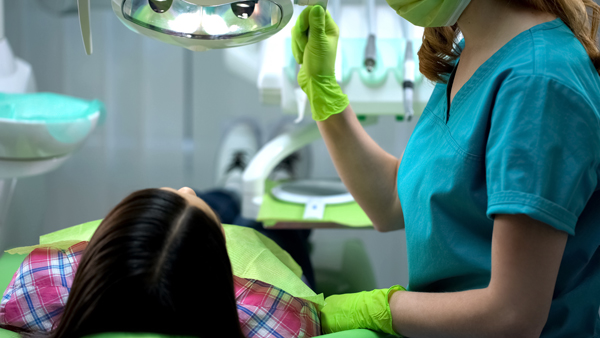Can a Broken Tooth Be Saved?

Dealing with a broken tooth? Read on to learn about how a dentist can help. A broken tooth is one of those injuries that tend to occur at the worst possible times. You’re having fun one second, and your tooth is broken the next. It might be a tasty treat you bite into, a fall, or a blow to the face that does the job. Fortunately, there are multiple ways a dentist can go about saving a broken tooth.
How a dentist saves a broken tooth
One broken tooth is enough to ruin the way your smile looks regardless of how healthy the rest of your teeth look. It also puts your oral health at risk since food particles and bacteria can become lodged in the crevices created by the damage. Some of a tooth’s enamel also comes off when its structures become damaged. Enamel being lost increases the risk of the tooth becoming damaged by decay.
The treatment recommended by a dentist for a broken tooth depends on the severity of the damage to the tooth. Some of the ways a dentist might opt to fix a damaged tooth include:
1. Composite bonding
This treatment involves using a composite resin made from mixtures of glass and plastics to rebuild and repair damaged teeth. The composite is matched with the shade of the patient’s teeth, so any repairs made do not stand out.
Composite bonding is a non-invasive procedure that does not require permanent alterations to the patient’s tooth. The procedure can be completed in as little as 45 minutes, and it is typically recommended for minor damage that does not affect a tooth’s pulp chamber.
2. Crowns
Crowns are typically recommended for moderate to severe breaks. The crown helps to hold what’s left of the tooth together, and it protects it from the bite forces generated while chewing. Placing a crown on a tooth involves removing enamel from its sides, so the crown fits snuggly on it. It is a permanent alteration that cannot be reversed in the future. This means the prepared tooth will always need a crown on it to serve as its artificial enamel.
Crowns also restore the aesthetics of damaged teeth, and they can be matched with the color of the patient’s other teeth.
3. Root canal
Root canal therapy is recommended when damage to a tooth reaches its pulp chamber. The chamber holds nerves, connective tissues, and blood vessels. It is sealed off from the rest of the tooth to protect the soft tissues from acids and bacteria in the mouth. Severe damage to a tooth can leave this area open, making the soft tissues in the pulp chamber vulnerable to infection.
A root canal is used to remove the soft tissues in the pulp chamber and seal the area back up.
We can fix your broken tooth
A broken tooth requires treatment regardless of how minor it is. Call or visit our Blaine clinic to set up an appointment.
Request an appointment here: https://www.ardendentalassoc.com or call Arden Dental Associates - Carlos Campodonico, DDS at (763) 237-3371 for an appointment in our Blaine office.
Check out what others are saying about our dental services on Yelp: What Should I Do If I Chip My Tooth in Blaine, MN.
Related Posts
A chipped tooth can occur in several different ways. This damage can also come in many levels of severity. Some chips are visible, while others may be hidden in the back of the mouth. Regardless of what the damage to your tooth looks like, it is vital to visit your dentist for an examination. Your…
It is awfully frustrating to have tooth pain when biting or chewing. It is even more frustrating to be unsure of the underlying cause, especially if the dentist cannot pinpoint a diagnosis at first. Unfortunately, pulp tests and x-rays may not provide insightful information, and in such cases, the tooth is likely cracked. In any…
A chipped tooth can cause pain and lead to more issues with eating, speaking and other normal functions.If you chip your tooth, give us a call as soon as possible. If the chip is large enough, try to bring the piece of tooth that chipped off. The sooner we treat the chip, the better chance…
Dental crowns are the most popular way to restore teeth that are in bad shape due to decay, injury or other imperfections. Modern-day dentistry has allowed for the evolution of many different material choices, all of which offer their own pros and cons. Keep reading to learn about three options that general dentists recommend. Outlined below…




